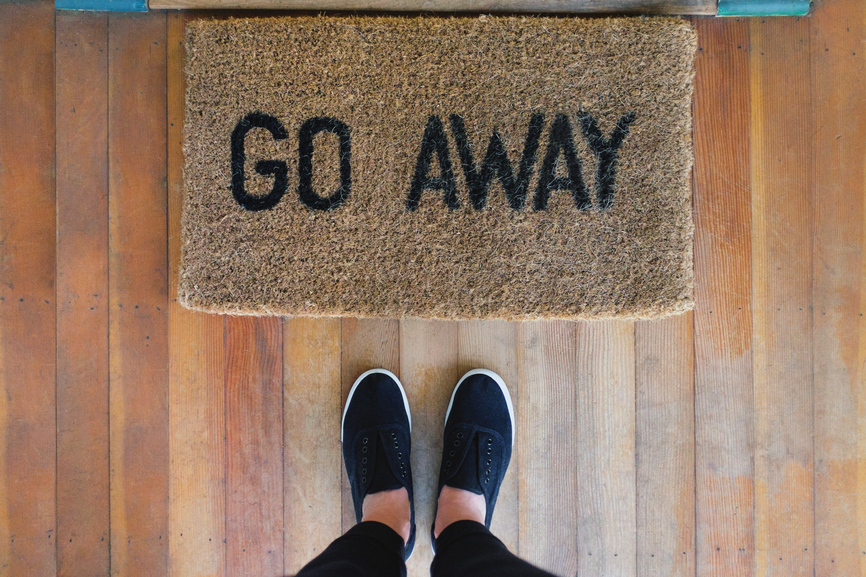Spot.IM is now known as OpenWeb.
According to Hubspot, 55% of your visitors spend less than 15 seconds on your website. Crazyegg, extends that limited time a little bit by allowing 59 seconds before your visitors return to their good old social networks newsfeed. With 15 seconds in mind, anything that you present badly on your site, can reduce that by another second.
Tony Haile, CEO of Chartbeat, calls the online web the “Attention Web” – as website owners, we no longer want clicks, likes or shares – we want our visitors undivided attention. In order to get this attention, your website needs to abide by internet guidelines that are proven to work. Here are 10 guidelines that will make your users stay on your site for more than 15 seconds, and who knows? maybe even longer.
The Clock is Ticking
First and most important element of your website is the loading time. KISSmetrics are right when they put a huge emphasis on loading time as the most important reason people leave your site. As a member of Generation Now, I wouldn’t spend more than 3 seconds in a website that doesn’t load properly. The longer the loading time, the more people abandon the website. 47% of website users expect a web page to load in 2 seconds or less. 40% abandon a website that takes more than 3 seconds to load. As consumers, if we are not satisfied with the website loading experience, we will not return to make purchases there again. Mobile phone users have a bit more patience when it comes to loading time, but only by a few seconds. They would wait between 6-10 seconds and then abandon the site. Loading time influences your conversions greatly. According to a KISSmetrics survey, “A 1 second delay in page response can result in a 7% reduction in conversions”. Basically, if your website makes $100,000 per day, a 1 second page delay could cost you $2.5 million in lost sales a year. So yes, loading time is very important.
Expectation vs. Reality
Now that the site loaded, hopefully in less than 3 seconds, visitors are faced with a new element: meeting their expectations. Visitors expect that the link they clicked or the URL they entered will represent the content they asked to see. Crazyegg gives nissan.com as a good example – visitors write nissan.com expecting to receive information about automobiles made by the car manufacturer Nissan. However, Nissan was unable to purchase this domain, an unfortunate circumstance, but one that they quickly worked around by heavily promoting their own domain – nissanusa.com. The likelihood that visitors will stay in nissan.com for more than one second is very low. It’s important that your domain name will reflect your company, your product, and complete the expectations the user had when clicking on your site.
THIS WAY —->
Once visitors are on the site, they very quickly assess their surroundings and move forward – if the website is hard to understand, and they are not sure what to do there, they will quickly abandon the website. Now isn’t that a shame? you already got someone to walk through the revolving door, and they are just going to keep going and exit. Less is more really applies here. Your website has to be simple enough that the visitor doesn’t get confused and stays to get what he needed from you. Keep it clear, concise, and emphasize the call to action.
Recalculating Route…
As website owners, we want our visitors to feel great when they browse our website. A bad navigation structure on a website can really make visitors feel exactly the opposite. Don’t scatter all your visual elements around the website – guide your visitor so he can feel that his browsing experience is logical and easy to understand. A frustrated and angry visitor will abandon your website very quickly. I know from personal experience that if I don’t know how to use a website, how to make a purchase, or how to complete a sign up – I will abandon the website in a matter of seconds.
Too Many Ads
Its as basic as that – too many ads are absolutely overwhelming to any site visitor. When visitors enter a site with multiple banners, the purpose of the site and what it’s trying to portray is hidden beneath the layers of excessive advertising. I’ve been to some sites that have a pop-up ad that cannot be closed unless you actively press something. As a visitor to that site, it took me a good 15 seconds to realize how to get rid of the annoying pop up. The only reason I bothered to look was because I was genuinely interested in what the site had to offer. If I wasn’t I’d be out of there in less than a second. Pop-up ads are great, but they have to be strategically placed and timed. It’s my belief, that pop-ups work best when your behaviour suggests that you’re about to leave. Popups that attack you as you enter the site are a bit much and don’t allow the visitor to get his bearings as he assesses the site. Put some thought into your advertising so you don’t end up pushing potential visitors away.
Sound of Music
One of the things that makes me close a website in less than a nanosecond is sound. When people surf the web, they choose what content they would like to see. As they access a website with sound, this choice it taken away from them and it creates an intrusion of their browsing experience. Always give your visitors the choice – whether its a video or audio content – auto-play is a big no-no. Facebook learnt that with their video ads, at first allowing visitors to change the newsfeed setting so video advertising will have no sound, and eventually they automated it for all users. Some brands actually play with this feature by intentionally creating video ads that don’t demand sound – relaying the message using only visual elements. If you choose to have video on your site – either let your visitors choose to watch it, or follow the Facebook way and let it play silently. One thing for sure – no background music please.
Please Sign Here
Asking users to register before entering the site is pretty much like putting the Wall of China in front of your site. It’s a sure no entrance sign. Requesting registration demands some elements of trust – that can only be acquired through seeing your site. Let your visitors browse your site a bit, and then ask for registration. Let them know that if they register – there is something in it for them – and they will gladly do it. This goes back to the popup comments I made before – don’t throw the registration popup in their face the moment they enter your site. Collecting visitors is somewhat like an act of seduction – and as such, you gotta take it slow.
Organize Your Content
Your content has to be well organized. According to KISSmetrics, “as many as 50% of sales are lost because potential customers can’t find what they’re looking for.” It comes down to the fact that sometimes it takes me over a minute to find the Contact Us page. Seriously? it shouldn’t be that hard to find a way to contact the website that you are on. It also connects to another element that I will speak of later – credibility. If your content is organized, you’re giving the visitor a clear browsing experience. Don’t make us search for what we need – present it to us on a silver platter. Put an emphasis on content that you can see visitors seek out, and remove content that no one looks at. Use Google Analytics or heat maps if you have to – but do it.
Keep It Fresh
When visitors enter a website, they would like to see activity and fresh posts. Last post: April 24, 2003 really doesn’t play well with your potential visitors. Let’s not take it that far, but activity needs to show at least every month. We web users work as a crowd – if we see that no one is there, we follow the crowd to better websites. Even more than that – if you’re not there – and you are the website owner – then why would we be there? Keep the frequency of posts and content, and keep the engagement. No one walks into an empty club. This social conduct is maintained online as well.
Be Genuine
Just as much as loading time is important, credibility is important. In the world wide web, anyone can own a website. People are already cautious when it comes down to websites that they are unfamiliar with. You need to gain their trust by building credibility. You can do this by getting third party validation whether it be security validation from your domain provider or payment validation from Paypal. Simple elements like adding your address and a Google map in your Contact Us page can go a long way. Also, the more ways that visitors can contact you – especially via phone, the more genuine you are. Remember when I couldn’t find the Contact Us page? that is one way to lose your credibility.
Truly, whether it be 15 seconds or 59 seconds, you have a really short time to grab your visitors attention. Work hard at it, and always test your user behaviour to see if you’re doing something wrong. A/B testing works, and is a proven method to use when you want your visitors to stay and come back for more.
An easy way to get your visitors to stay, is to build a community on your website with Spot.IM.


